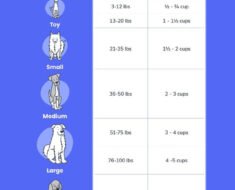Dogs communicate through a complex language of gestures, postures, and sounds. When owners miss these signals, they lose opportunities to understand their pet’s needs and emotions. This can create frustration and weaken your bond with your dog. For more in-depth guidance on canine body language, see the Dogs Trust’s advice on understanding your dog’s body language.
This interactive quiz and behavior decoder helps you interpret your dog’s communication accurately. Based on veterinary science and animal behavior research, these tools will help you recognize stress signals, vocal patterns, and expressions of joy. If you’d like additional practice, try the Dog Body Language Quiz on Permies for more scenarios and feedback.

Interactive Dog Body Language Quiz
Quiz Instructions: Select the most accurate interpretation for each behavior. After completing all questions, you will receive personalized feedback and recommendations based on your responses.
Question 1: Tail Position Analysis
Your dog holds their tail high and stiff, with just the tip wagging slightly when greeting a stranger. What is your dog likely communicating?
A) Relaxed friendliness
B) Excitement and happiness
C) Alertness with potential aggression
D) Submissive greeting
Click for instant feedback: If you chose C, correct! A high, stiff tail with minimal movement indicates confidence or potential aggression, not friendliness. The slight tip wagging shows arousal but not necessarily positive emotion.
Question 2: Scenario-Based Park Interaction
At a dog park, your dog approaches another dog with a relaxed, loose body and gentle tail wagging. Suddenly, they look away, lick their lips, turn sideways, and start sniffing the ground. What should you do?
A) Encourage continued interaction
B) Recognize stress signals and create distance
C) Wait and observe
D) Call your dog immediately
Feedback: B is correct. Your dog is showing calming signals (looking away, lip licking, turning sideways) indicating they feel overwhelmed and need space.
Question 3: Vocal Communication
Your dog produces rapid, continuous, deep barks when someone approaches your front door. This bark type indicates:
A) Playful excitement
B) Alarm barking – alerting to a threat
C) Attention-seeking behavior
D) Loneliness
Feedback: B is correct. Deep, harsh, rapid barking signals alarm behavior; your dog is alerting you to a potential threat or stranger.
Question 4: Eye Contact Patterns
When you look directly at your dog, they immediately turn their head away and avoid eye contact. This behavior indicates:
A) Disobedience
B) A calming signal to reduce tension
C) Distraction
D) Guilt
Feedback: B is correct. Head turning and avoiding eye contact is a calming signal dogs use to communicate peaceful intentions and reduce tension.
Question 5: Stress Response Recognition
Your dog yawns repeatedly during a vet visit despite being well-rested. This likely means:
A) Boredom with waiting
B) Tiredness from travel
C) Stress or anxiety response
D) Need for more oxygen
Feedback: C is correct. Yawning when not tired is a classic stress signal dogs use to self-soothe during uncomfortable situations.
Question 6: Play Bow Interpretation
Your dog lowers their front end with their chest near the ground while keeping their rear up, tail wagging. This posture means:
A) Submissive fear response
B) Play invitation
C) Stretching after rest
D) Stomach pain
Feedback: B is correct. The play bow is a clear invitation for interaction and indicates your dog wants to engage in friendly play.
Question 7: Whale Eye Recognition
You notice the whites of your dog’s eyes showing in a crescent shape while their head turns slightly away from an approaching child. This indicates:
A) Normal eye positioning
B) Stress or anxiety (whale eye)
C) Curious observation
D) Relaxed state
Feedback: B is correct. “Whale eye” (showing the whites of the eyes) is a stress signal indicating your dog feels uncomfortable and needs space.
Question 8: Lip Licking Without Food
Your dog repeatedly licks their lips when no food is present during a thunderstorm. This means:
A) Anticipating treats
B) Thirstiness
C) Stress or anxiety response
D) Mouth cleaning
Feedback: C is correct. Lip licking without food present is a calming signal indicating stress, especially during anxiety-provoking events like storms.
Question 9: Raised Paw Behavior
Your dog lifts one front paw and holds it in the air while standing still and looking at you. This gesture indicates:
A) Paw injury
B) Pointing behavior
C) Uncertainty or conflict
D) Handshake request
Feedback: C is correct. A raised paw often indicates uncertainty or conflicted feelings about what to do next.
Question 10: Aggressive Warning Scenario
During a walk, an approaching dog shows raised shoulder fur, a rigid body, and a tense mouth with pulled-back lips, while your dog yawns repeatedly and turns their head away. What should you do?
A) Allow the dogs to meet
B) Create distance immediately – one dog shows aggression warnings
C) Wait and observe
D) Encourage interaction
Feedback: B is correct. The approaching dog shows multiple aggression warnings (raised hackles, rigid posture, tense mouth), while your dog shows calming signals. Create distance immediately for safety.
Personalized Quiz Results and Recommendations
Excellent Understanding (8-10 correct)
You have a strong knowledge of canine body language! You can recognize both obvious and subtle communication signals.
Recommended next steps:
- Practice observing multi-dog interactions
- Learn advanced calming signal recognition
- Study breed-specific communication differences
Good Foundation (5-7 correct)
You understand basic dog communication but missed some important signals.
Specific recommendations based on missed questions:
- If you missed stress signal questions (3, 5, 7, 8): Review the “Stressed and Anxious Dogs” section below
- If you missed aggression questions (1, 10): Study the “Aggressive Warning Signs” section
- If you missed vocalization questions (3): Focus on the “Dog Vocalizations Guide” section
Learning Opportunity (0-4 correct)
Understanding dog language will significantly improve your relationship with your pet.
Priority learning areas:
- Start with basic stress signals (yawning, lip licking, looking away)
- Practice recognizing obvious body postures (play bow, aggressive stance)
- Observe your dog daily in different situations
Complete Dog Vocalizations Guide
Bark Types and Their Meanings
Alarm Bark
- Sound: Deep, harsh, rapid, continuous
- Meaning: Alerting to threats or strangers
- Response: Acknowledge the alert, then redirect
Playful Bark
- Sound: High-pitched, variable during play
- Meaning: Excitement or play invitation
- Response: Engage appropriately or redirect if too intense
Attention-Seeking Bark
- Sound: Short, high-pitched, repeated
- Meaning: Wants attention, food, or outdoor access
- Response: Address legitimate needs, ignore attention-seeking
Lonely/Isolation Bark
- Sound: Spaced series with pauses
- Meaning: Calling for company when alone
- Response: Address separation anxiety through training
Greeting Bark
- Sound: One or two short, mid-pitched sounds
- Meaning: Friendly acknowledgment
- Response: Calm acknowledgment without encouraging excessive barking
Other Important Vocalizations
| Vocalization | Characteristics | Meaning | Appropriate Response |
|---|---|---|---|
| Whines/Whimpers | High-pitched, sustained | Needs, discomfort, anxiety, excitement | Assess and address the underlying need |
| Yelps | Single, sharp, high-pitched | Pain, surprise, fear | Check for injury, provide comfort |
| Warning Growls | Low, sustained | Upset, fearful, warning | Respect the warning, remove pressure |
| Play Growls | Lower intensity, intermittent | Playful engagement | Monitor play intensity |
| Territorial Howls | Long, mournful | Contact calls, territory assertion | Normal behavior, manage if excessive |
| Loneliness Howls | Repeated when alone | Calling for the pack | Address separation issues |
Essential Dog Body Language Signals
Tail Communication Decoded
Your dog’s tail position and movement reveal emotional states:
- High, stiff tail with minimal movement: Confidence, alertness, or potential aggression
- Relaxed, mid-level wagging: Friendly, comfortable state
- Low wagging: Uncertainty, nervousness, or submission
- Tucked tail: Fear, anxiety, or stress
- Fast, stiff wagging: High arousal – could be excitement or aggression
Important note: Breed differences matter. A Husky’s naturally high tail carries a different meaning than when a typically low-tailed dog raises its tail.
Eye Contact and Facial Expressions
Eye signals reveal emotional states:
- Direct, hard stare: Challenge, confidence, or threat
- Soft, blinking eyes: Relaxation, comfort, friendly intent
- Averted gaze: Calming signal, deference, stress reduction
- Whale eye (showing whites): Anxiety, discomfort, fear
- Dilated pupils: Arousal, fear, high alertness
Facial tension indicators:
- Relaxed facial muscles: Comfort and contentment
- Tense jaw and forehead: Stress, vigilance, arousal
- Lip licking without food: Stress, uncertainty, anxiety
- Panting without heat/exercise: Stress or anxiety
Ear Positions and Emotional States
Ears constantly adjust to reflect feelings:
- Forward-facing ears: Alertness, interest, attention
- Slightly back ears: Friendly, relaxed greeting
- Ears pinned flat: Fear, submission, stress
- Rapidly shifting positions: Conflicted feelings or uncertainty
Breed consideration: German Shepherd ears move differently than Beagle ears, but both make similar adjustments relative to their natural position.
Critical Calming Signals
Dogs use specific behaviors to reduce tension:
- Yawning when not tired: Stress reduction, conflict avoidance
- Lip licking: Nervousness, appeasement, stress
- Looking away: De-escalation, avoiding confrontation
- Slow movements: Signaling non-threatening intentions
- Sudden ground sniffing: Tension diffusion
- Sitting or lying down: De-escalation of perceived threats
- Shaking off “as if wet”: Stress release after tense situations
- Soft blinking: Communicating peaceful intentions
Understanding Emotional States
Happy and Relaxed Dogs
Content dogs display consistent patterns:
- Loose, wiggling body posture without stiffness
- Relaxed, slightly open mouth often appearing to “smile”
- Smooth, gentle tail wagging at mid-height
- Soft, blinking eyes without intense focus
- Ears in a neutral position for their breed
- Playful, bouncy movements with balanced weight
- Comfortable sighing or groaning when settling
Relaxed dogs show fluid movement rather than appearing stiff.
Stressed and Anxious Dogs
Recognize these stress signals:
- Panting when not hot or exercised
- Excessive shedding in short periods
- Pacing or inability to settle
- Increased vigilance and startle response
- Decreased appetite
- Avoidance behaviors like hiding
- Displacement behaviors (excessive licking, scratching, yawning)
- Digestive changes including diarrhea
Chronic stress leads to behavioral and health problems, so early recognition allows for intervention.
Fearful Dogs
Fear manifests through key signals:
- Cowering or crouched posture
- Tucked tail between the legs
- Trembling or shaking
- Ears flattened against the head
- Whale eye (showing whites)
- Attempting to increase distance from a trigger
- Freezing or slow-motion movement
- Potential bladder/bowel loss in extreme cases
- Excessive drooling or stress panting
Fear can escalate to defensive aggression if dogs feel cornered.
Aggressive Warning Signs
Dogs display a warning progression before biting:
- Body stiffening with weight forward
- Direct, hard staring
- Raised hackles along the neck or back
- Closed, tense mouth
- Growling or snarling
- Showing teeth or curling a lip
- Snapping in the air
- Lunging with or without contact
This “ladder of aggression” allows dogs to communicate discomfort before biting.
Debunking Common Behavior Myths
Myth: A wagging tail always means friendliness.
Reality: Tail wagging indicates emotional arousal. The position, speed, and breadth determine whether the arousal is positive or negative. High, stiff, fast wagging often signals alertness or potential aggression.
Myth: Submissive urination shows spite.
Reality: Dogs who urinate during greetings display an involuntary submissive response due to excitement or fear, not spite. Punishment worsens this behavior by increasing anxiety.
Myth: Dogs look “guilty” after wrongdoing.
Reality: The “guilty look” (lowered head, averted eyes, ears back) is a submissive response to your angry tone, not an admission of wrongdoing. Dogs do not connect your current anger with their past actions.
Myth: “Alpha rolling” teaches respect.
Reality: Forcing a dog onto its back creates fear and damages trust rather than establishing “dominance.” Modern science has debunked the alpha/dominance theory in dog-human relationships.
When to Seek Professional Help
Red Flag Behaviors Requiring Intervention
Seek professional guidance for:
- Sudden aggression in previously friendly dogs
- Growling, snapping, or biting in everyday situations
- Extreme fear responses that do not improve with time
- Compulsive behaviors (excessive licking, spinning, shadow chasing)
- Persistent house soiling after medical clearance
- Self-injurious behaviors
- Significant personality changes
- Inability to calm down in normal environments
Early intervention prevents problems from becoming entrenched.
Types of Professionals
Certified Applied Animal Behaviorists (CAAB): Professionals with advanced degrees and scientific behavior training.
Veterinary Behaviorists (DACVB): Veterinarians with specialized behavior training who can prescribe medication.
Certified Professional Dog Trainers (CPDT): Trainers with verified positive training knowledge.
Fear Free Certified Professionals: Trained to reduce fear and stress.
Building Better Communication
Respecting Your Dog’s Signals
Build trust by responding appropriately:
- Honor calming signals by reducing pressure during stress.
- Create escape routes so dogs can remove themselves.
- Avoid forced interactions with people or other animals.
- Intervene when children miss subtle warnings.
- Allow appropriate refusal of non-essential handling.
- Match your dog’s energy level.
Dogs whose communication is respected rarely escalate to serious warnings.
Creating Positive Interactions
Encourage better communication through:
- Side approaches rather than head-on.
- Under-chin and chest petting for shy dogs.
- The 3-second rule (pet briefly, then stop to see if the dog asks for more).
- Respecting personal space.
- Calm body language with a relaxed posture.
- Lower, softer vocal tones.
Teaching Children Dog Language
Essential safety rules:
- Never approach a dog that is eating, sleeping, or with toys.
- Recognize warning signs (freezing, growling, whale eye).
- Understand that hugging and kissing stress most dogs.
- Give dogs space when they walk away.
- Interact calmly without screaming or running.
- Always ask for permission before petting unfamiliar dogs.
- Learn the proper approach (side-on, allow sniffing, pet the chest).
Related Quiz Resources
Personality-Based Quizzes:
- “What dog am I quiz” – Matches human personalities with dog breeds based on temperament and energy levels.
- “What dog breed matches my personality quiz” – Helps you understand how your traits relate to breed-specific behaviors.
Relationship Assessment Quizzes:
- “Does my dog love me Quiz BuzzFeed” – Focuses on interpreting affection signals like tail wagging, licking, and following behaviors.
- “What dog am I based on my personality” – Encourages reflection on how your personality influences your relationships with dogs.
These quizzes can be an entry point to a deeper understanding of canine behavior and communication patterns.
Understanding your dog’s communication transforms your relationship from guesswork to genuine connection. Practice observing your dog daily in different contexts to develop a personalized understanding of their unique communication style. The time invested in learning dog language strengthens your bond, prevents behavioral issues, and creates a happier relationship with your canine companion.
References
^(1) https://vcahospitals.com/know-your-pet/canine-communication—interpreting-dog-language
^(2) https://www.akcpetinsurance.com/blog/calming-signals-what-your-dog-says-with-gestures
^(3) https://www.aspcapro.org/sites/default/files/canine-body-language-aspca.pdf
^(4) https://www.rspca.org.uk/adviceandwelfare/pets/dogs/behaviour/understanding
^(5) https://www.battersea.org.uk/pet-advice/dog-advice/understanding-dog-body-language





